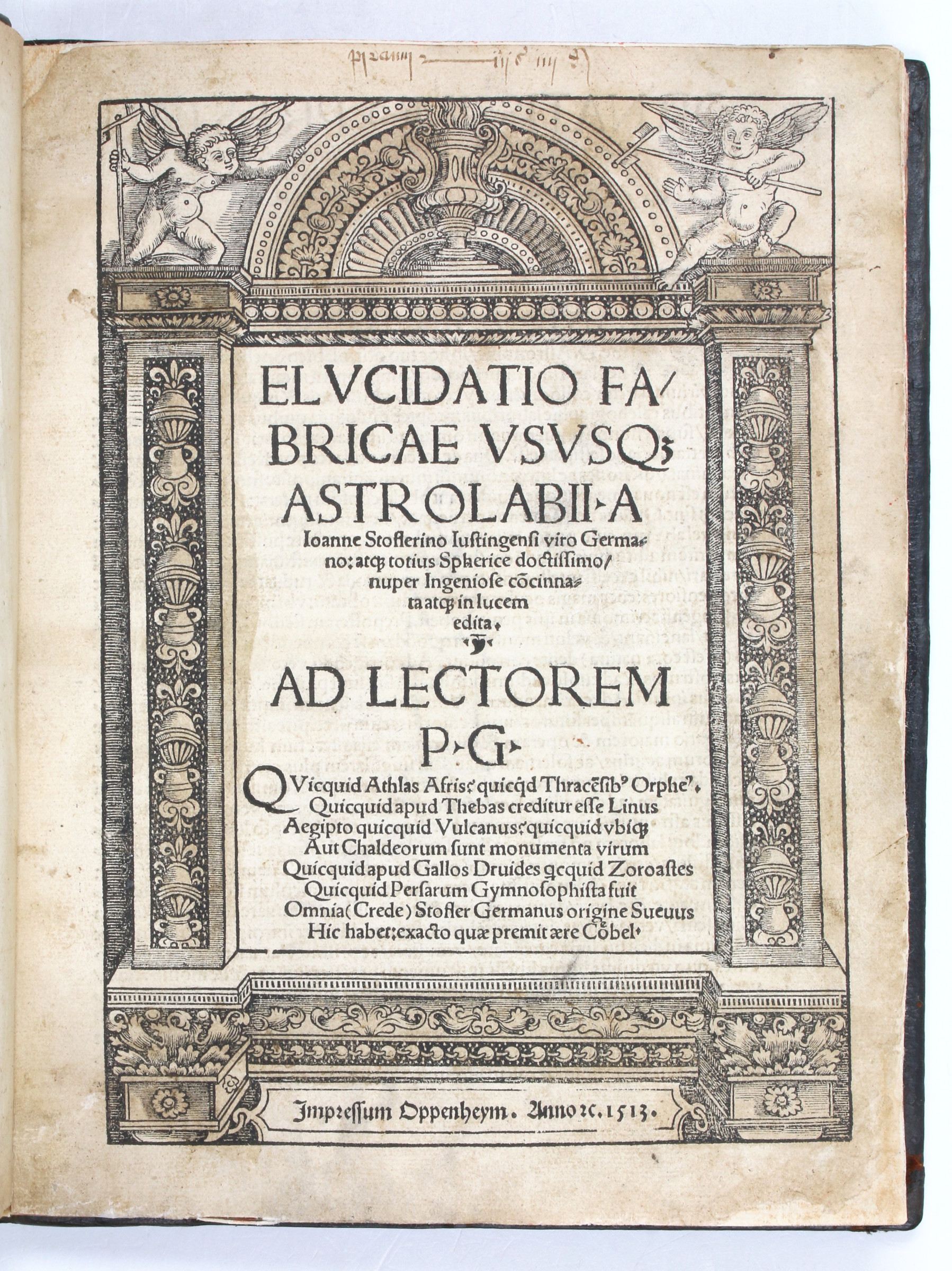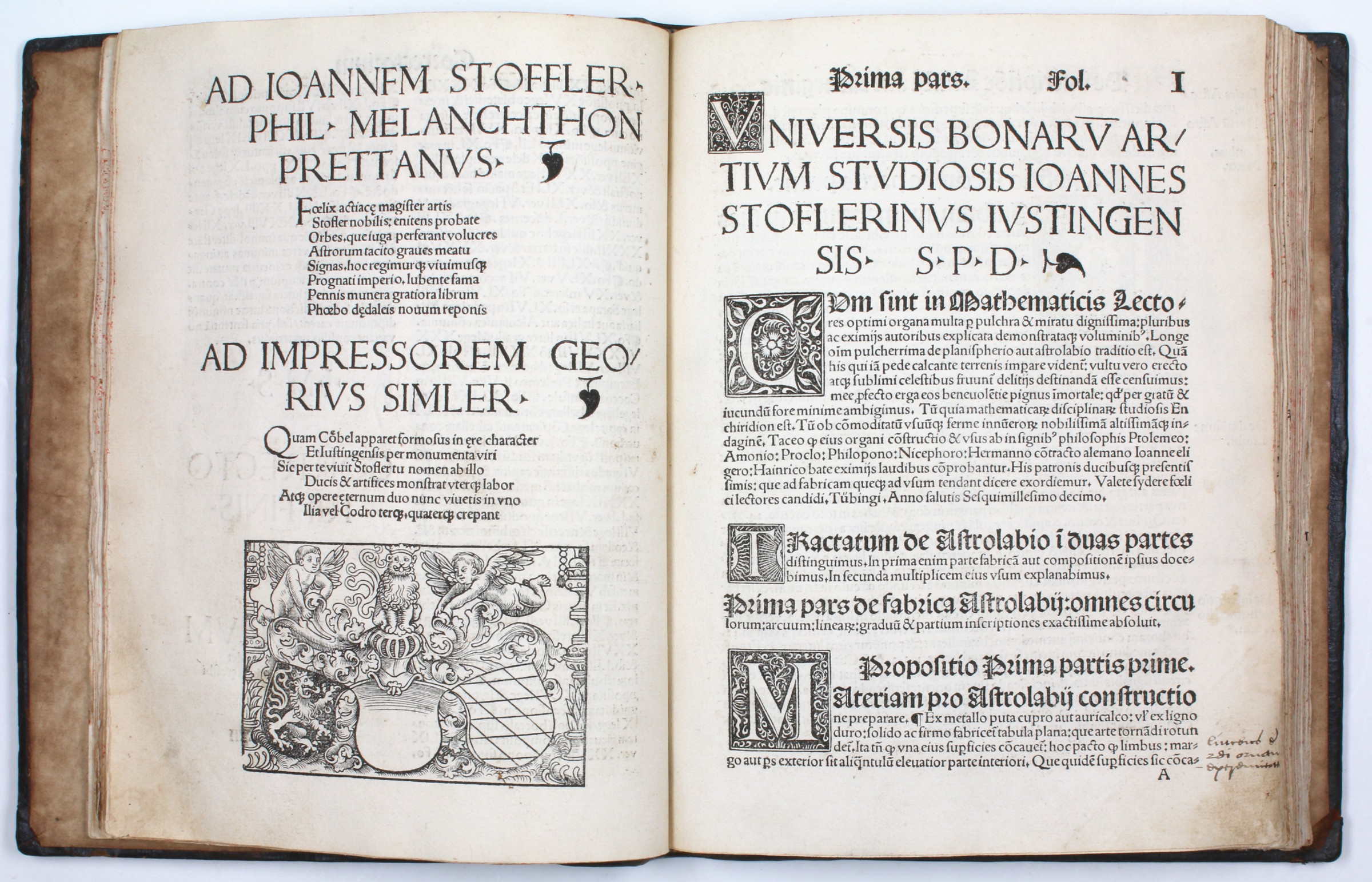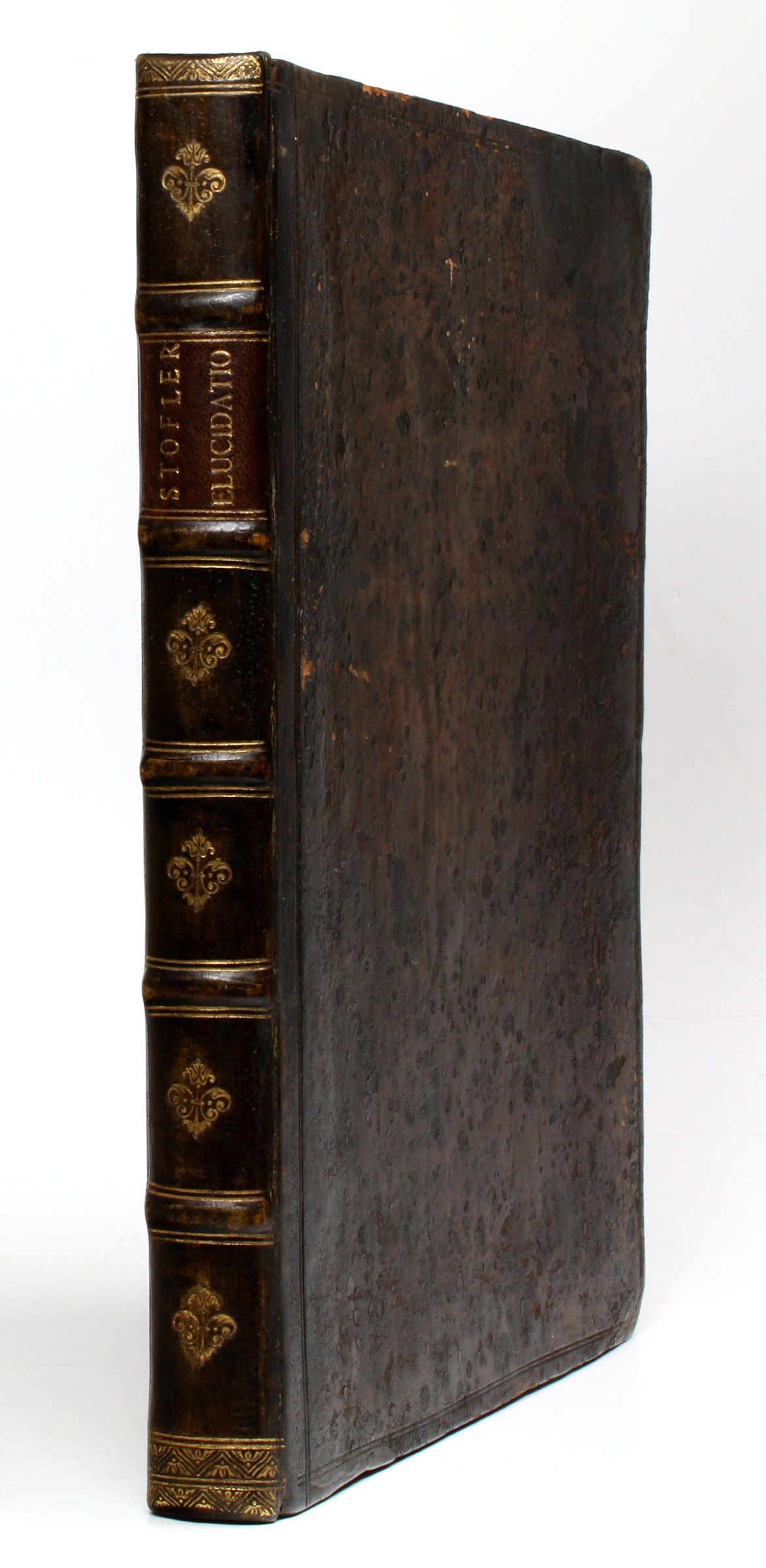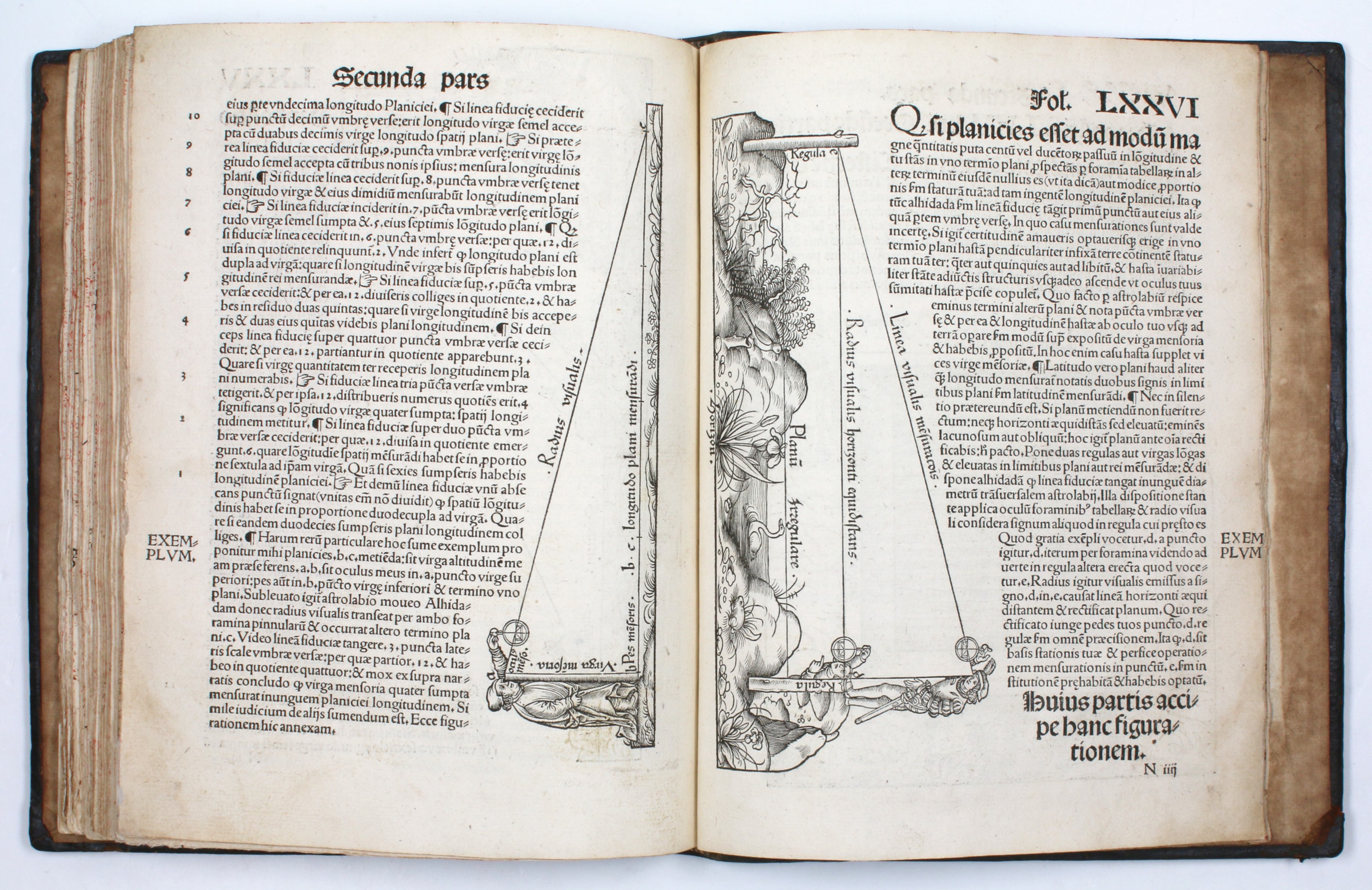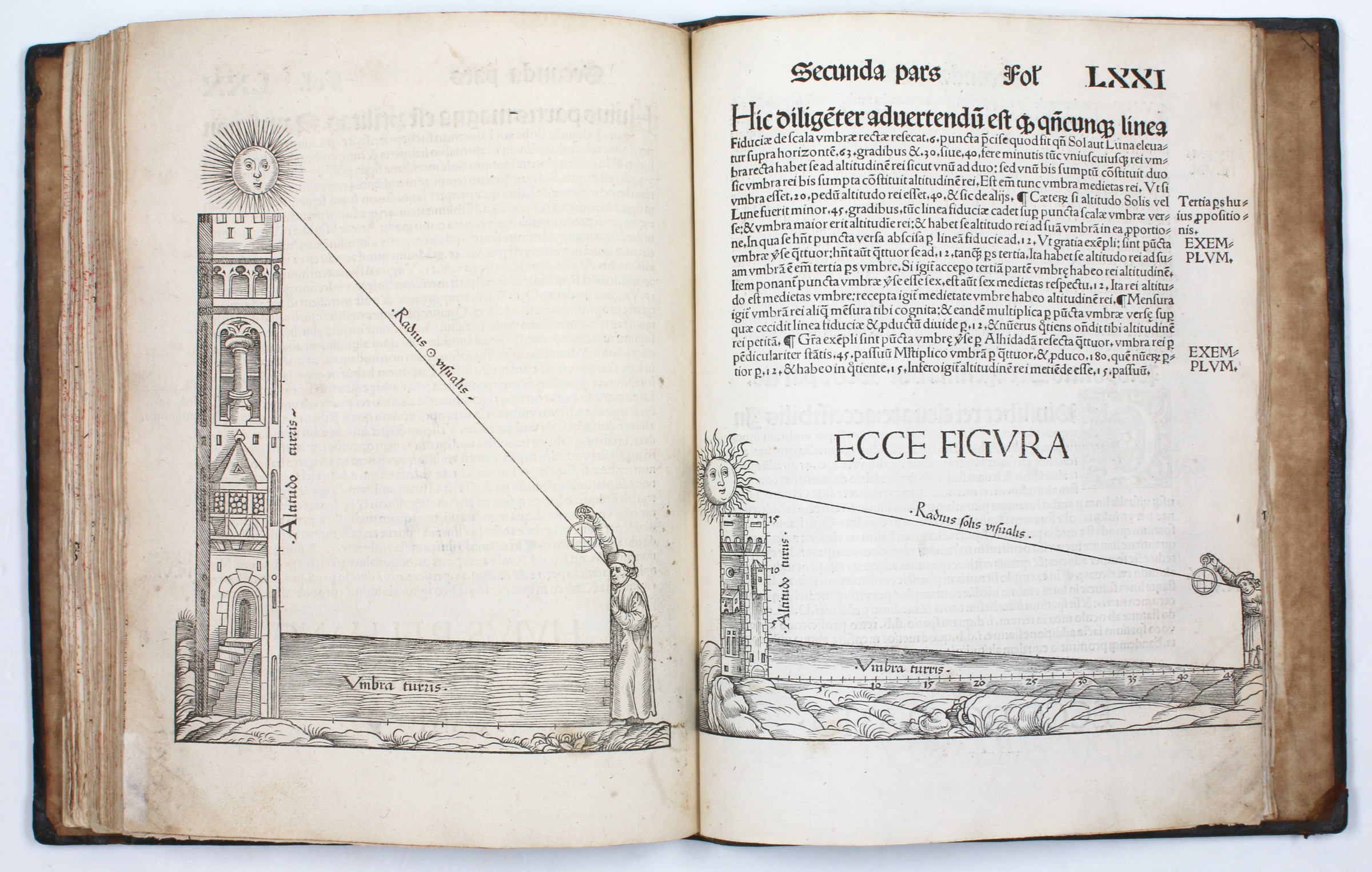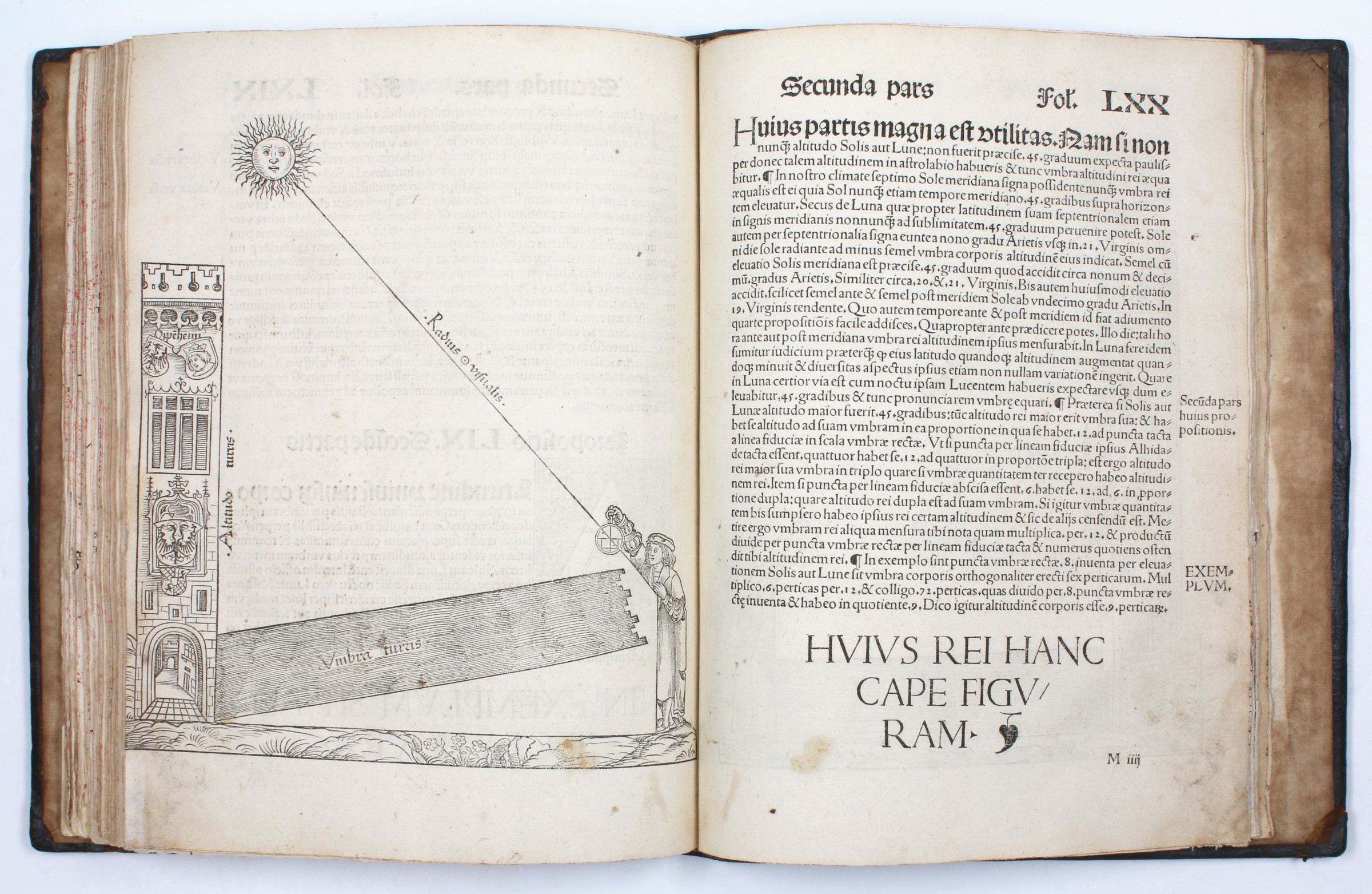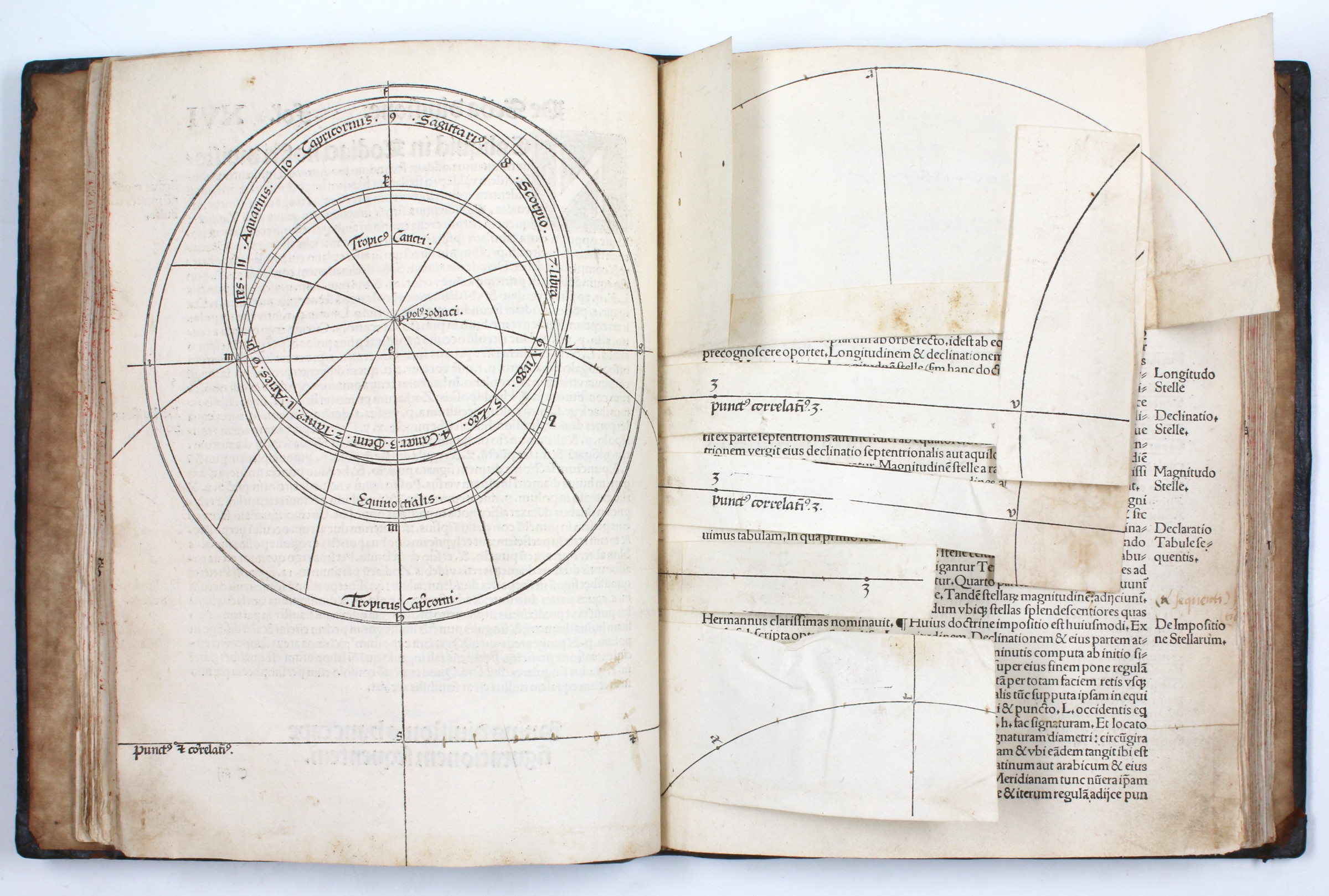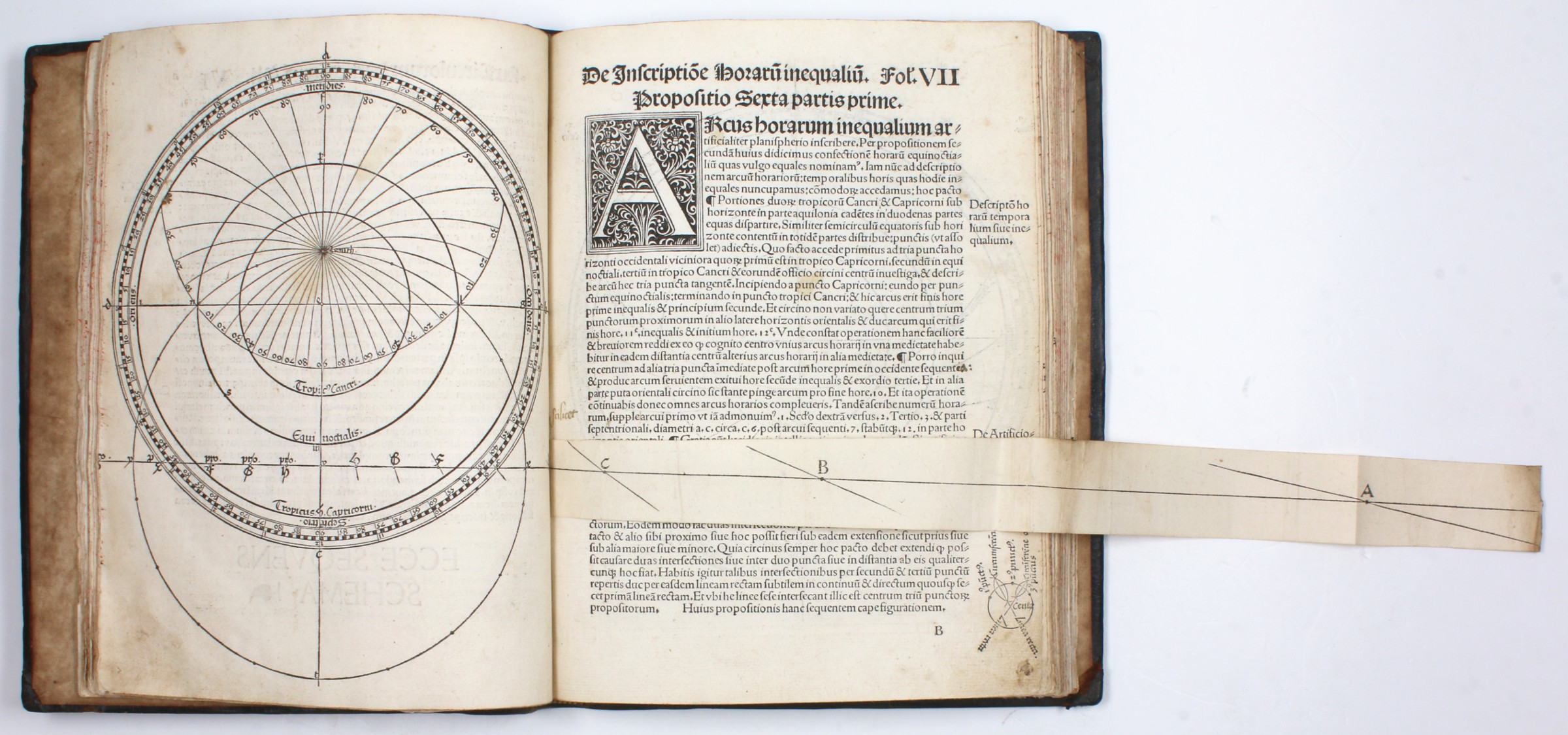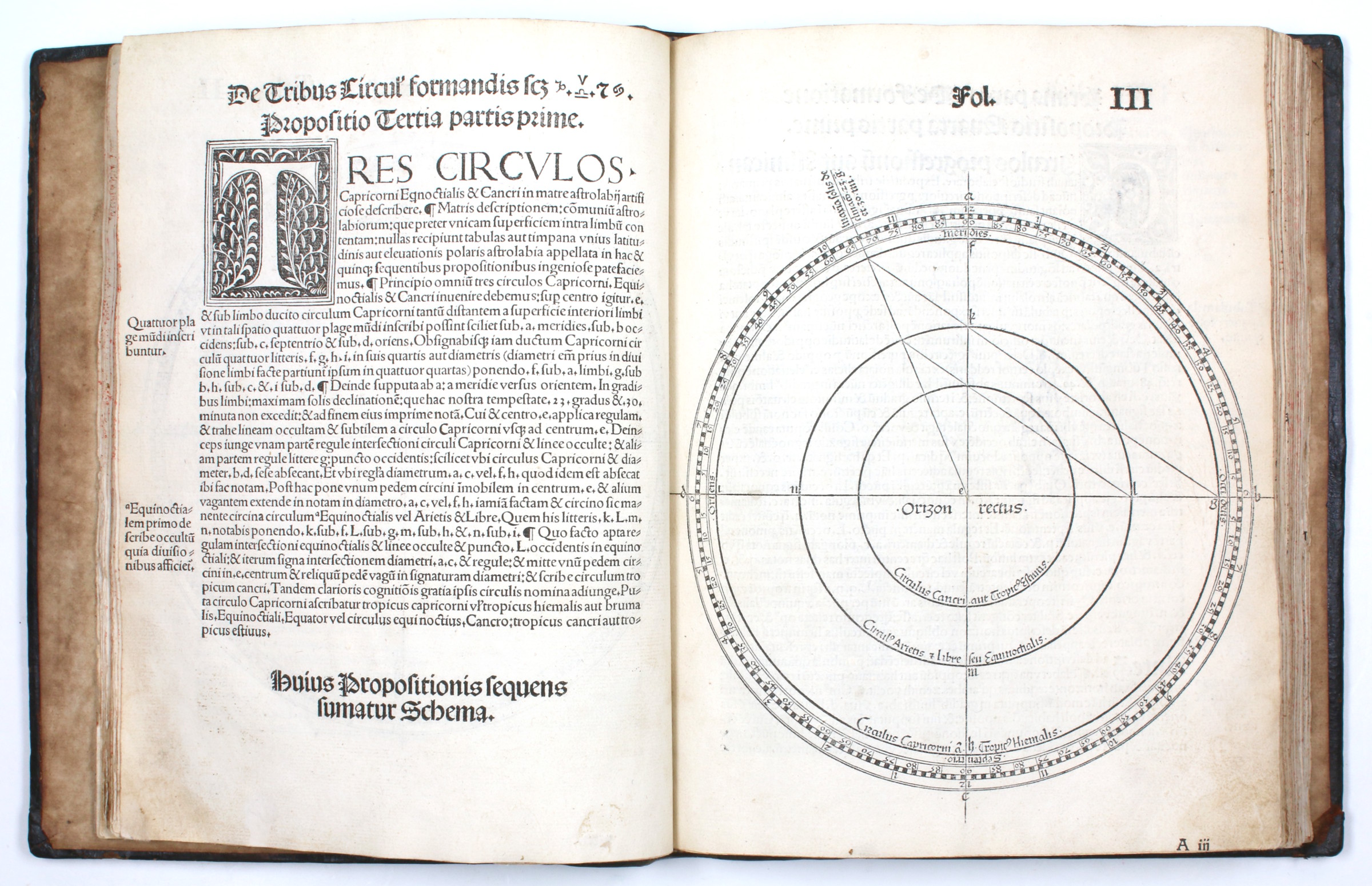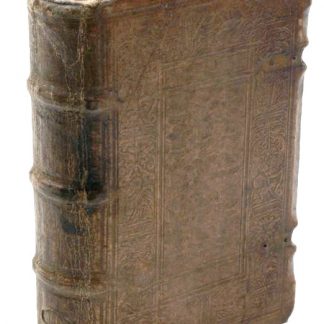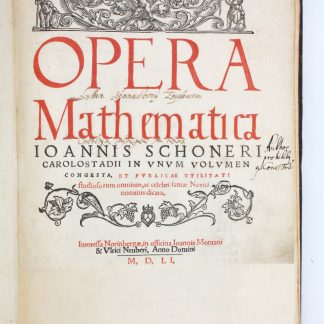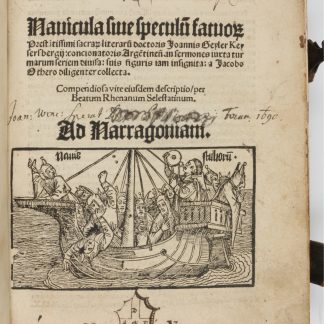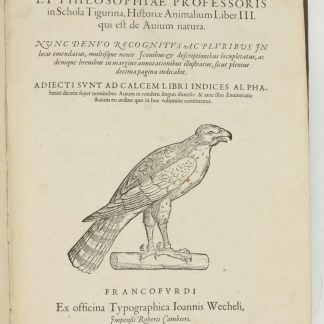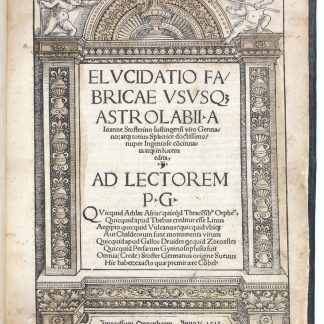The astrolabe in early print, illustrated with woodcuts
Elucidatio fabricae ususque astrolabii.
Large 4to (200 x 254 mm). (12), 78 ff. With numerous woodcut decorations in full-page and hors-text plates, three with fold-out elements; title within woodcut architectural border, woodcut arms of Georg Simler, woodcut decorative initials and printer's device. 17th century speckled calf.
€ 15.000,00
First edition: the Macclesfield copy of the most comprehensive treatise on the astrolabe of its time, handsomely printed at the first press in Oppenheim. "This, the first book printed in Germany (written in Latin) on the construction and use of the astrolabe, is also one of the best" (Tomash/W.). Rare at auction, this work includes remarkable and delicate folding plates. In these woodcuts, the instrument is shown at roughly full-size: astrolabes could and were constructed larger, but this was approximately the standard size for a scholar's personal astrolabe, and one which was portable.
The scholar and instrument-maker Johann Stöffler (1452-1531) was appointed to the chair of mathematics and astronomy at the University of Tübingen. The teacher of Philipp Melanchthon (1497-1560), Johannes Schöner (1477-1547), and Sebastian Münster (1488-1552), he was a key member of the generation which considered Regiomontanus the paragon of Renaissance astronomers. Stöffler's fame rests primarily on his creation of a surviving celestial globe and on authoring this work in particular, which made several advances in understanding the application of the astrolabe. One of Stöffler's achievements in the book was recognizing that, "in mapping, computation of the distance between two places whose latitude and longitude were known failed to take into account the convergence of the meridians" (Stillwell), an issue for which Stöffler offers corrections.
Of further note in this edition is the quality of the diagrams, the latter of which illustrate the use of instruments in the field. They include small detailed scenes in which a man triangulates a distance or the height of a tower, lushly decorated with little landscapes, architectural features, and a correctly angled astrolabe. Additionally, a dedicatory poem by the sixteen-year-old Philipp Melanchthon, soon to be the most important political actor and theological author of the Wittenberg Reformation after Martin Luther, appears following the index - Melanchthon's first ever appearance in print.
From the library of the Earls of Macclesfield, with armorial blindstamp to title-page and 1860 North Library armorial bookplate to front pastedown, with press mark '180 G. 9'.
A few spots of light soiling; in remarkably good condition, especially the folding diagrams involving small slips of paper which rarely survive.
VD 16, S 9191. BM-STC German 834. Adams S 1886. Houzeau/Lancaster 3256. Tomash & Williams S 197. Stillwell, Science 892. Wellcome 6099. Hartfelder, pp. 37f. & 648.

